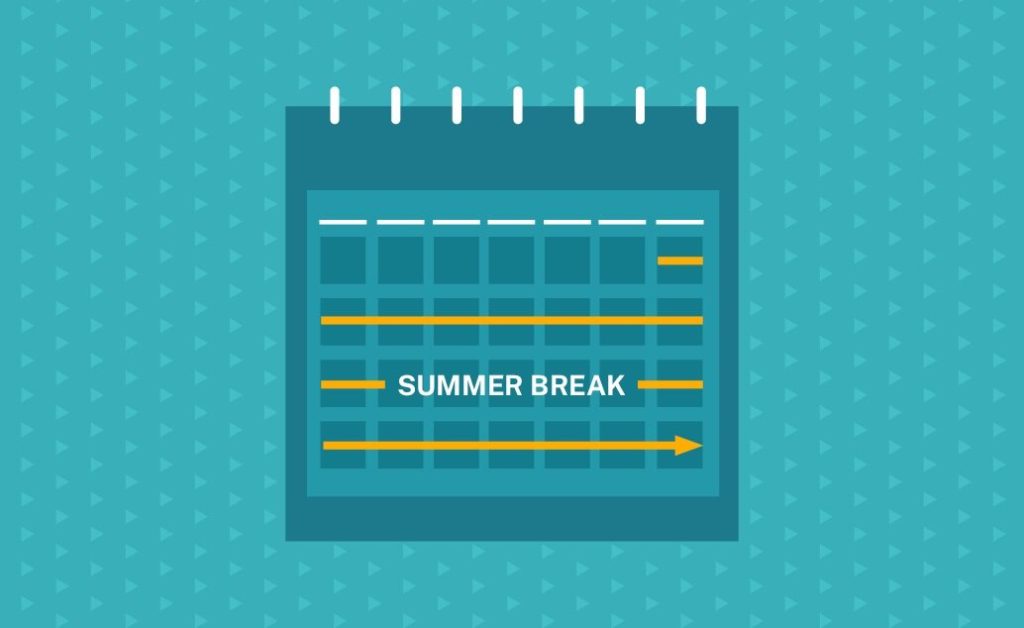
It’s no secret that one of the biggest perks of the education field is the months-long summer vacation – a well-deserved respite from the job’s demands August through May. For some teachers, this is a time to recharge on a beach, enjoy time with family or knock out a few novels by the pool. For others, this is a time to lead staff development sessions, teach summer school or begin planning lessons for the upcoming year. For most, the ideal summer vacation lands somewhere in between: taking time for self-care while also mentally preparing for the year ahead.
Whether you are a few weeks into your vacation or summer break has just begun, take care of both your personal and professional needs with these tips to make the most of your summer.
1. Be fully present.
Whether you are spending time with your family or traveling for leisure, summer break is the time to leave your multitasking teacher ways behind. For me, this begins with simple changes such as temporarily disabling teacher communication apps, muting the grade level group text and putting my work computer away. Summer is a time to regain the work-life boundaries that so often get blurred during the school year, and it starts with eliminating the distractions that frequently cause us to lose our focus on what matters most.
2. Stick to a schedule.
My first summer as a teacher, I found that the abrupt transition from a predictable, highly structured schedule to a very fluid one was challenging for me. I swung from one extreme to the other – wanting to pack my day full of productivity or do nothing at all. I found it helpful to establish a schedule to help me make the most of my days off. Predetermined wake-up times, bedtimes, meal times and times for exercise or errands have become a part of my summer routine, and as a result, helped me keep a healthy balance between productivity and leisure.
3. Set small goals.
At the beginning of each summer, I sit down and establish some SMART goals to help me stay on top of my own professional and personal to-do list, on top of all the fun stuff. These are non-negotiables; the things that I likely wouldn’t have the time or energy to do during the school year, and therefore, need to accomplish during the summer months. This summer, my goals included cleaning out a bedroom closet, checking off some titles off my professional reading list, drinking more water and launching my own Teachers Pay Teachers store. Whatever your goals, make sure they are small, clear and time-specific. Otherwise, you will find yourself caught in the procrastination trap until school resumes.
4. Decide on a “soft start” date.
Most schools require at least a few days of pre-planning before the school year officially starts. However, it’s no secret that many teachers resume “school mode” even in advance of this date. For myself, I enjoy the low-pressure flexibility of preparing my classroom a week or so before staff officially returns to school, or what I refer to as my “soft start” date. Whatever your personal preference, decide in advance when you will give yourself permission (or some extra motivation) to put your “teacher hat” back on. Doing so helps you not only prepare mentally for a return to school but also ensures that your summer doesn’t slip away from you – whether preparing at school or relaxing at home.
5. Look forward with purpose.
Once your “soft start” has begun (or perhaps while you are lounging at the lake), begin to look ahead toward the new school year with enthusiasm and purpose. What are the things that make you love teaching? What great practices would you like to continue from the previous school year, or what new methods would you like to implement in the next one? What are your professional goals? What kind of teacher would you like to be for your students? Take some time to journal and reflect while you are rested, energized and clear-headed. These intentions will serve as the fuel you need when it’s time to step back into the classroom and (ready or not!) charge full steam ahead into the next school year.
Summer is also the best time to start a new graduate-level program. Explore all American College of Education programs in education to find the one that suits your needs.

